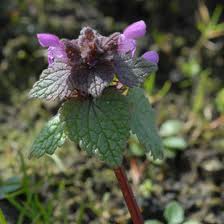 LADY’S MANTLE, ALCHEMILLA MOLLIS, ALCHEMILLA VULGARIS
LADY’S MANTLE, ALCHEMILLA MOLLIS, ALCHEMILLA VULGARIS Lady’s Mantle is known by many other names, both in English and botanical names. For example it is also known as Alchemilla speciosa and Alchemilla xanthochlora as well as the names listed in the title. It has been called leontopodium or lion’s foot, bear’s foot, Stellaria, and in French, Pied-de-lion, and in German Frauenmantle, and these names come from Mediaeval times, and refer to the shape of the leaves it is believed.
The genus name
Alchemilla is a corruption of the Arabic
al-kemelyah or alchemy, perhaps because the furrowed leaves make cups for dew, and this was given mystical properties and put in potions. Lady’s Mantle was the name written by Jerome Bock, better known by his Latin name Tragus, who mentions it in 1532 in his herbal, “History of Plants.” The name was adopted later by Karl Linnaeus.
Lady’s Mantle is at home in northerly climes, so is found in Greenland and the Arctic as well as in northern Britain and the Himalayas, and cold parts of Asia. The “Lady” in question is the Virgin Mary as this plant has been used throughout the centuries for “female” problems, so is associated with her.

An infusion of the plant or tisane taken over a prolonged period of time is said to be beneficial in reducing the symptoms of the menopause and to stop excessive bleeding during menstruation. With
Shepherd’s Purse, it is given after childbirth to stop bleeding in some countries. For menstruation problems it is given in infusions with
yarrow (milfoil).

It is a member of the Rosaceae family and so is related to the
rose,
almonds,
loquats,
quinces,
plums,
peaches,
strawberries,
apples, blackberries, raspberries and
pears. The roots have astringent properties as do the leaves as the plant is rich in tannin, making it good externally for cuts and wounds and internally for diarrhoea, among other problems. It was considered one of the best vulnerary (wound-healing) herbs.
Nicholas Culpeper writing in the 17th century has this to say about it:-
“Government and virtues. Venus claims the herb as her own. Ladies' Mantle is very proper for those wounds that have inflammations, and is very effectual to stay bleeding, vomitings, fluxes of all sorts, bruises by falls or otherwise, and helps ruptures; and such women as have large breasts, causing them to grow less and hard, being both drank and outwardly applied; the distilled water drank for 20 days together helps conception, and to retain the birth; if the women do sometimes also sit in a bath made of the decoction of the herb. It is one of the most singular wound herbs that is, and therefore highly prized and praised by the Germans, who use it in all wounds inward and outward, to drink a decoction thereof, and wash the wounds therewith, or dip tents therein, and put them into the wounds, which wonderfully dries up all humidity of the sores, and abates inflammations therein. It quickly heals all green wounds, not suffering any corruption to remain behind, and cures all old sores, though fistulous and hollow.”
For excessive menstruation use 1 ounce of the dried aerial parts of the plant (best harvested in June or July when the leaves are at their peak and the plant is in full flower, then dried for later use) to one pint of boiling water. Leave to steep for 10 minutes then strain and drink as required, in a small tea cup dose.
A strong decoction of the fresh roots is said to stop all bleedings and the dried powdered root is also efficacious. It is also said that if you put one of the leaves under your pillow you will have a trouble-free sleep.

Traditionally the plant has been used for obesity and is currently thought to be useful for weight loss combined with
horsemint,
Mentha longifolia,
cumin seeds and extract of
olive leaves. The leaves are used with those of
bistort and
Polygonum persicaria,
Lady’s Thumb or mild arssmart to make a bitter herb Lent pudding in northern England, called Easter Ledger pudding.
The sap from the plant is said to have anti-inflammatory actions and is used for acne and other skin problems. A weak decoction of the whole plant is said to help with conjunctivitis, as an eye-wash.
The leaves can be crushed and placed directly on wounds and bee stings, so next time you cut yourself while in the countryside- hope that there’s some Lady’s Mantle around!
 The bark of the tree and leaves are used in traditional medicine in the
The bark of the tree and leaves are used in traditional medicine in the 





























